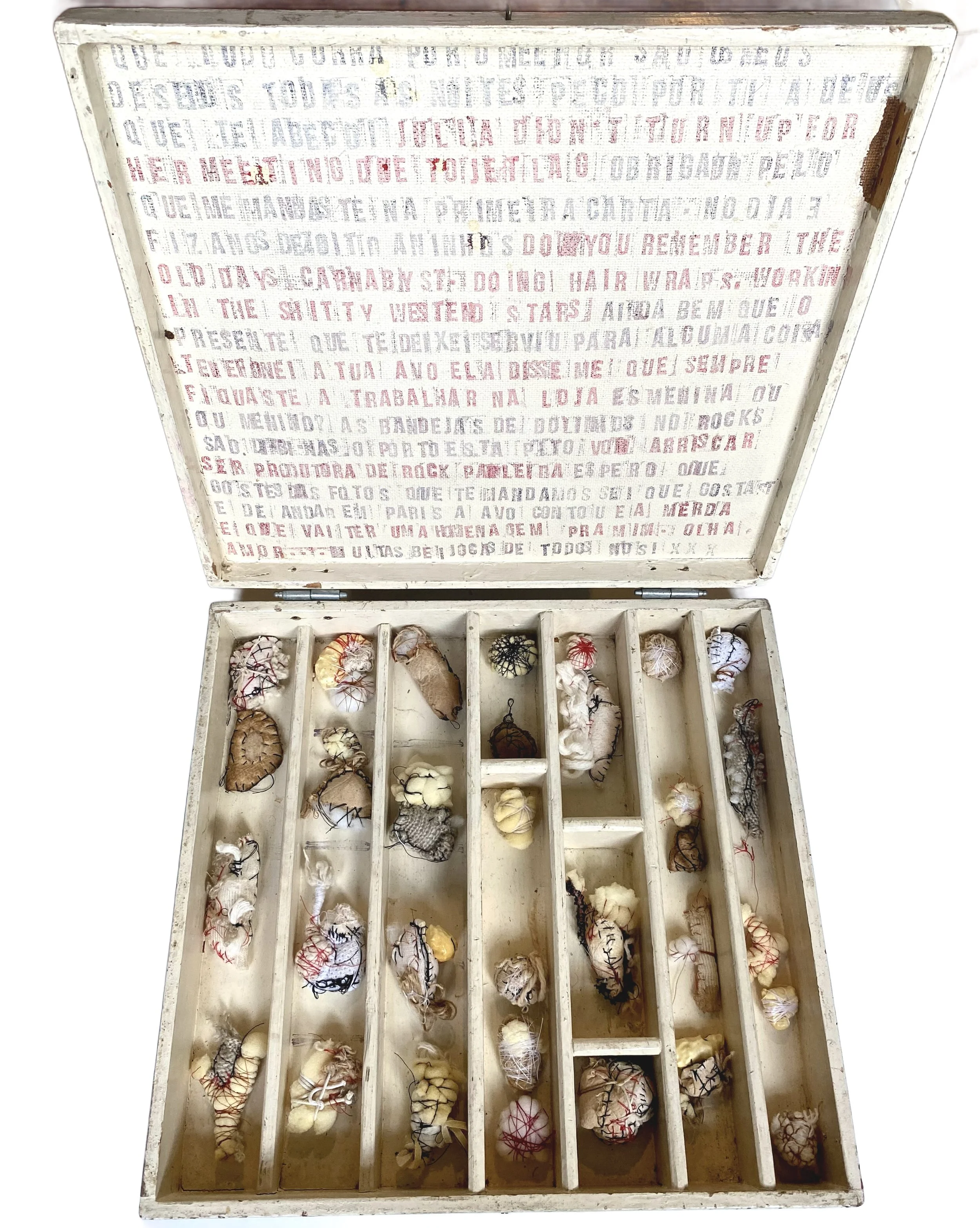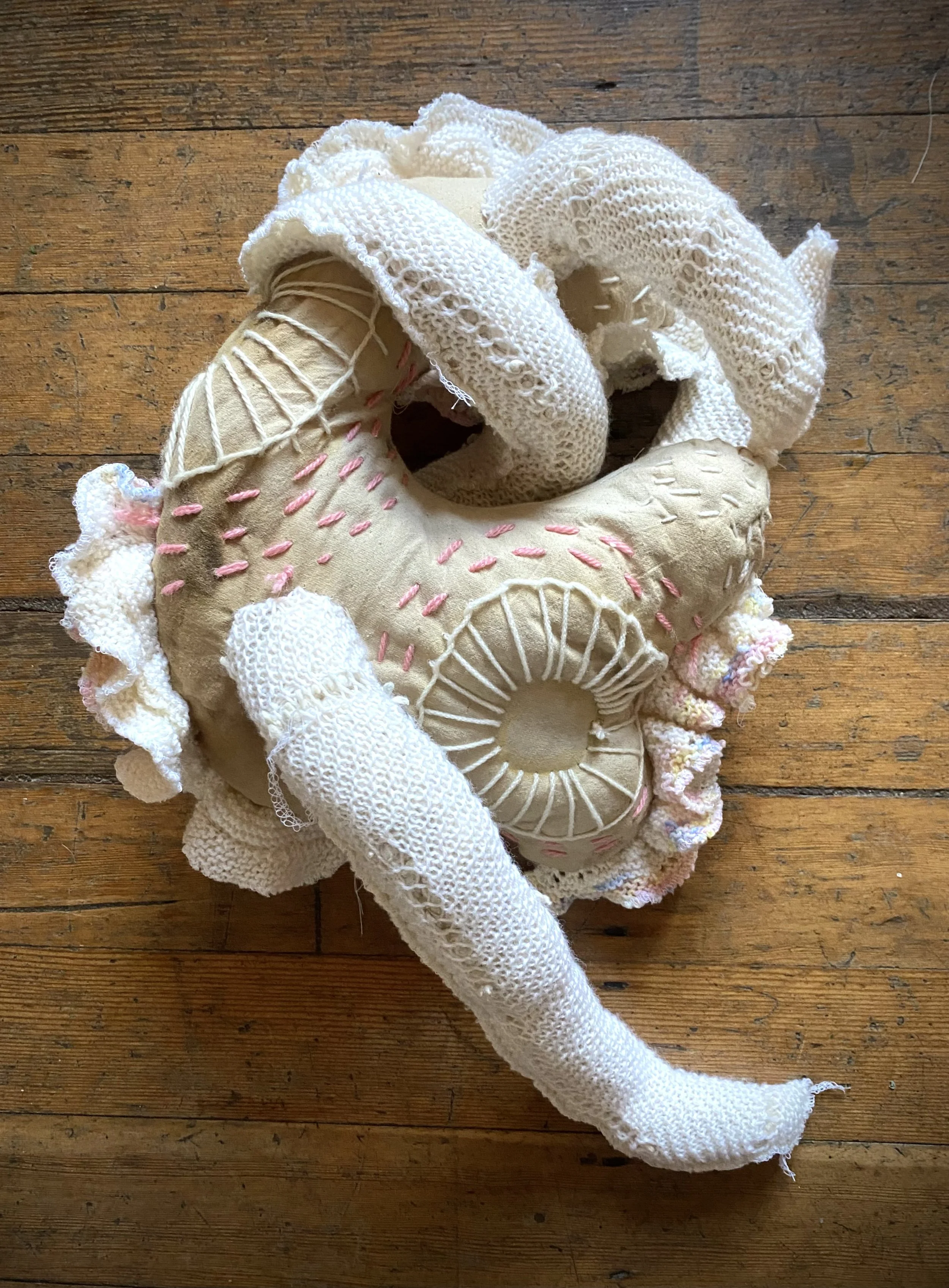These art objects function as tactile memory vessels—repositories of time, emotion, and embodied experience. Constructed from soft, intimate materials such as fabric, aged lace, sponge, and hair, their worn and stained surfaces evoke the erosive passage of time. These materials, fragile and familiar, mirror the malleable nature of memory itself: unstable, shifting, and continually reshaped by sensation and context. Far from static artifacts, these objects are meant to be touched, handled, and physically engaged with. Their material presence invites a haptic encounter, drawing viewers into a shared space of sensory remembrance. This dynamic relationship resonates with theorist Karen Barad’s concept of intra-action of —where meaning emerges through relational encounters rather than within isolated entities. Here, memory is not passively retrieved but actively co-created through touch, presence, and interaction. Each viewer becomes a participant in this unfolding process. As the objects are activated through tactile engagement, memories are not only recalled—they are reawakened and reconfigured. This echoes Marianne Hirsch’s notion of ‘postmemory’ where the past is transmitted not only through knowledge but through affective, embodied proximity to remnants and traces. The artworks serve as those very traces—sites where personal and collective histories converge. Here the audience is invited to a mode of "interview-action"—a reciprocal exchange where the viewer is both interrogator and respondent. The object becomes a storyteller, but also a mirror, reflecting back fragments of the viewer's own subjectivity. In this encounter, the distinction between artist, object, and audience begins to dissolve, allowing memory to surface not as static history, but as living, breathing experience. Ultimately, these works resist closure. They remain open, generative, and incomplete until touched—until felt. Through each encounter, they invite not only recollection, but transformation: of memory, of meaning, and of self.
In response to the concepts explored above, I have created a sculptural box composed of multiple compartments, each designed to hold tactile memories. This piece acts as both container and conduit—an archive of material correspondences that trace personal and collective experiences of transformation. Some of the objects were created in memory of loved ones who have passed, including my grandmother and close friends. They function as more than symbolic remnants; they carry a haptic resonance that evokes presence through absence.
By framing these organic objects as 'correspondences', I draw on their capacity to activate memory and affect in the viewer. Each object becomes a point of entanglement—a node in a web of emotional, material, and temporal relations. These correspondences are not static; they speak, whisper, and touch through their materiality. They embody Barad’s notion of intra-action, wherein meaning emerges not from isolated entities but from their relational becoming. The box itself thus becomes a pedagogical device—one that does not teach through instruction, but through affective encounter, inviting viewers to engage with their own embodied memories and losses.
This work situates itself as a lived, material practice of mourning, remembering, and transformation. It proposes that recovery and becoming are not linear journeys, but layered, textured, and sensory processes shaped through intimate interactions with matter, memory, and emotion.





